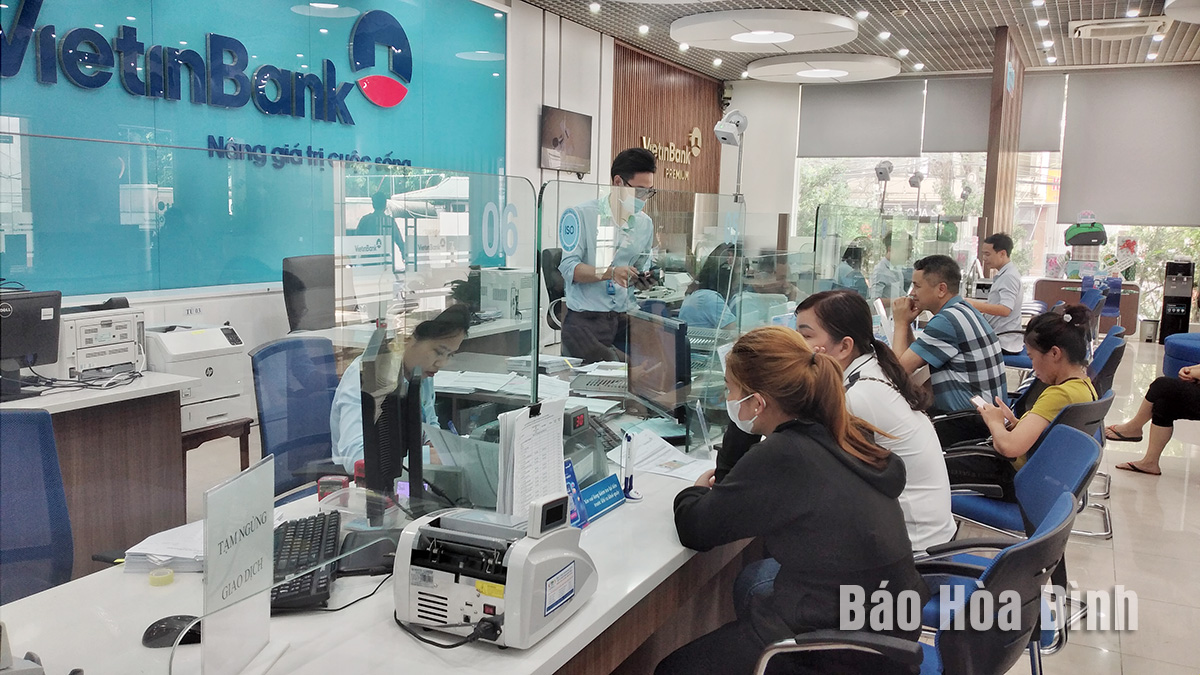
Numerous credit solutions have been implemented by local banks in Hoa Binh province to support individuals and businesses affected by Typhoon Yagi. These measures include debt rescheduling, providing in-depth financial advice, and offering interest rate reductions based on the extent of damages.

VietinBank has introduced an interest rate reduction programme of up to 2% per annum for customers affected by Typhoon Yagi. This programme applies from the end of September until December 31, 2024).
Agribank has launched a large-scale interest rate reduction
programme for borrowers affected by the typhoon. For existing loans, the bank
is reducing interest rates and waiving overdue interest for a specific period.
New loans will also benefit from reduced interest rates.
Similarly, the Military Commercial joint Stock Bank (MB) has
rolled out support programmes for storm victims, focusing on interest rate
reductions to alleviate financial burdens and aid in recovery efforts.
Customers with loans affected by natural disasters can receive interest rate
cuts of up to 2% based on the severity of damage and financial situation.
The bank has also allocated 7 trillion VND (277 million USD) for
new loans with preferential interest rates to support both individuals and
businesses in their recovery efforts.
To further assist customers, many banks have implemented
additional measures such as loan extensions, restructuring repayment terms, and
providing specialized financial advice. They have also given priority to loan
applications for housing and employment needs, and intensified social welfare
activities to support heavily affected customers.
The State Bank of Vietnam's branch in Hoa Binh has reported that
banks and credit institutions in the province have actively implemented credit
programmes to support storm victims. In line with government directives, banks
have proactively identified customers in need of debt restructuring and
provided guidance on procedures.
As of October 9, 2024, 78 customers in Hoa Binh with a total
outstanding debt of over 6.7 billion VND had reported damage by Typhoon Yagi.
The support measures implemented include debt restructuring for 3 customers,
interest waivers for 72 customers, new loans for 3 customers, and interest rate
reductions worth approximately 800 million VND.
According to data from the Hoa Binh Provincial Party Committee, the industrial production index for the first six months of 2025 is estimated to have increased by 20% compared to the same period last year. This marks the highest year-on-year growth rate for this period since 2020.
In the first six months of 2025, Hoa Binh province’s export turnover was estimated at 1.145 billion USD, marking an 18.11% increase compared to the same period in 2024. Import turnover was estimated at $ 804 million, a 17.15% increase, which helped the province maintain a positive trade balance.
The lives of the ethnic minority farmers in Tan Lac district have gradually improved thanks to the new directions in agricultural production. This is a testament to the collective strength fostered through the professional associations and groups implemented by various levels of the district’s Farmers’ Union.
With the motto the "product quality comes first,” after nearly one year of establishment and operation, Muong village’s Clean Food Agricultural and Commercial Cooperative, located in Cau Hamlet, Hung Son Commune (Kim Boi district), has launched reputable, high-quality agricultural products to the market that are well-received by consumers. The products such as Muong village’s pork sausage, salt-cured chicken, and salt-cured pork hocks have gradually carved out a place in the market and they are on the path to obtaining the OCOP certification.
In the past, the phrase "bumper harvest, rock-bottom prices" was a familiar refrain for Vietnamese farmers engaged in fragmented, small-scale agriculture. But today, a new spirit is emerging across rural areas of Hoa Binh province - one of collaboration, organisation, and collective economic models that provide a stable foundation for production.
Maintaining growing area codes and packing facility codes in accordance with regulations is a mandatory requirement for agricultural products to be eligible for export. Recently, the Department of Agriculture and Environment of Hoa Binh province has intensified technical supervision of designated farming areas and packing facilities to safeguard the "green passport" that enables its products to access international markets.



